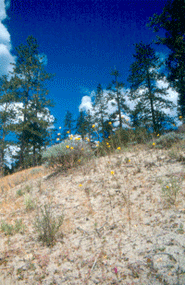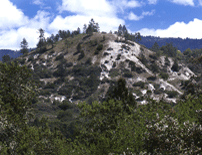The Santa Cruz Sandhills are home to three animal species that are endemic to (found only in) the Sandhills. Named for the towns and neighborhoods in the region, they are:
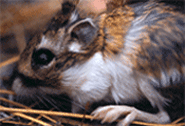
The Santa Cruz Sandhills are home to three animal species that are endemic to (found only in) the Sandhills. Named for the towns and neighborhoods in the region, they are:
The Santa Cruz kangaroo rat (Dipodomys venustus venustus; Heteromyidae) is a small rodent that is endemic to (found only in) the Santa Cruz Sandhills. More closely related to gophers than true rats, the Santa Cruz kangaroo rat earned its name because it hops on its two large, hind legs. At night, this rare animal emerges from burrows in the sand chaparral community to gather seeds in its cheek pouches, which it then stores in seed caches.
Recent research found that three of four Santa Cruz kangaroo rat populations known to occur in 1984 have become extirpated (locally extinct). The only known remaining population is threatened by fire exclusion, which removes gaps in the shrub canopy required by the kangaroo rat, and illegal recreational use which collapses burrows and erodes soil.

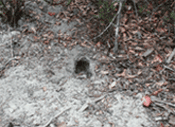
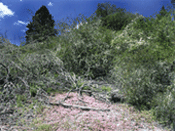

The Mount Hermon June Beetle (Polyphylla barbata) is endemic to (found only in) the Santa Cruz Sandhills, where it inhabits both the sand parkland and sand chaparral communities. This cryptic animal lives underground as a larva, feeding on the roots of plants for approximately two years. Adult beetles do not eat, but instead emerge from the sandy soil solely to mate. While females are flightless, males can be observed flying around searching for mates at twilight during the summer, earning them the name "June Beetle", though they can be observed between May and September.
Due to its limited geographic range (Santa Cruz County) and narrow habitat specificity (Santa Cruz Sandhills), the Mount Hermon June Beetle, like other Sandhills endemics, is naturally rare. As a result of habitat loss, the Mount Hermon June Beetle has been listed as endangered by the United States Fish and Wildlife Service. The rare insect is threatened by habitat degradation, including night lighting which attracts adult males away from their habitat and may reduce reproduction and thus population growth.
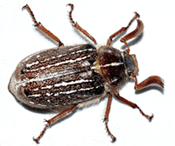
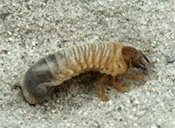
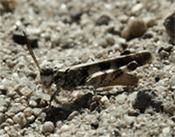
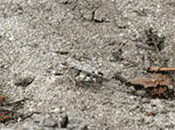
The Zayante Band-Winged Grasshopper is a small grasshopper endemic to (found only in) open habitat characteristic of sand parkland within the Santa Cruz Sandhills. During days with warm to hot temperatures between May and September, this well-camoflauged grasshopper can be found basking or feeding on plants. When startled, it will fly a short distance, creating with its wings a surprisingly loud crackling noise known as crepitation. During very hot periods of the day, Zayante Band-Winged Grasshoppers have been known to take refuge within the canopy of small shrubs, such as the silver bush lupine, which are scattered within sand parkland.
The Zayante Band-Winged Grasshopper is exceptionally rare, as it is known to occur in five sandhills sites within which it inhabits primarily the rare sand parkland habitat. Recognizing this, the United States Fish and Wildlife Service listed this Sandhills endemic as federally endangered in 1997. It's persistence continues to be threatened by habitat loss, and degradation of habitat due to unlawful recreation and the invasion and spread of exotic plants.

